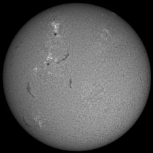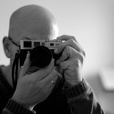Retained
-
Member Title
Senior Member
Personal Information
-
Location
Cincinnati
Recent Profile Visitors
-

Optical Network Configurations
jabbr replied to jabbr's topic in Networking, Networked Audio, and Streaming
I am saying: 1) Using a modern Ethernet network, the eye-pattern ensures that the rejection of noise is in fact more than adequate for audiophile purposes 2) There are transmission layers above Ethernet, e.g. the IP layer for which there has been virtually no discussion: "jitter" at these layers certainly causes audible effects, most obviously "pops" and dropouts, but more subtle audible effects have only been scantly investigated. The packet delays or "jitter" at the IP level is > 1,000,000 times that of the underlying Ethernet layer i.e. in the millisecond to 100s of millisecond range and most certainly audible yeah Ravenna etc works to minimize this nonetheless the packet delay variation or packet jitter (network jitter) remains vastly higher by orders of magnitude than the ethernet clock jitter etc. This may be an easy to understand link: https://www.nextiva.com/blog/network-jitter.html -
https://petapixel.com/2024/09/24/terramaster-f8-ssd-plus-nas-review-tiny-fast-quiet-and-impressive/ https://www.amazon.com/TERRAMASTER-F8-SSD-Plus-NAS/dp/B0D9HWLDX5?th=1
-

Article: Sonore Signature Rendu SE Deluxe Review
jabbr replied to The Computer Audiophile's topic in Article Comments
To each their own, just saying that the networked approach has its own adherents and the product being discussed isn't as crazy as the B-52s 😛 Also at the speed of light, controlling the music sourced from a server in your living room, or alternatively in my basement is irrelevant in terms of the human experience (I'm not living in either Elon Musk's spaceship or Jeff Bezos' house) -

Article: Sonore Signature Rendu SE Deluxe Review
jabbr replied to The Computer Audiophile's topic in Article Comments
Look, in your own private Idaho based listening room, you can put your PC wherever you want, but I keep the bits for my very very large library in my basement, and access and send it remotely over network. In short there are many ways to as they say skin a Cat -

Article: Sonore Signature Rendu SE Deluxe Review
jabbr replied to The Computer Audiophile's topic in Article Comments
Simple, first a $4K server is cheap as far as servers go, but lets suppose it is a high powered server doing some processing e.g. HQPlayer but could be something else, and has fans, or otherwise one wants to separate this computer from the audio area which is intended to be electrically quiet ... ethernet and specifically fiberoptic ethernet which 100% blocks common mode noise (fancy ground loops), so yes you need a device to accept the fiberoptic input and one which has been designed to be electrically quiet for the audio area, and this box sends the bits to the $32k DAC ... your real question? Why doesn't the $32K dac have a fiberoptic ethernet input? I have no idea but if you want to add a fiberoptic ethernet input to an arbitrary DAC that has a USB input you need a device. These devices range from idk $300 up to the device being discussed here. Do you need it? Do you need a $32K DAC? Easy, if you don't care about this you don't need to do it, nor consider it. -

Optical Network Configurations
jabbr replied to jabbr's topic in Networking, Networked Audio, and Streaming
For folks reading, this is end to end "jitter" not clock jitter, the component of the total jitter due to the clock is maybe 10% and most of it is due to the rest of the electronics -- you can't stick a femtosecond clock where a 10 femtosecond clock was and expend a 100 picosecond electrical circuit to improve, you have to design the entire circuit to be 10 femtoseconds ... that we could ever *hear* these differences. -

Optical Network Configurations
jabbr replied to jabbr's topic in Networking, Networked Audio, and Streaming
Exactly!!! who is claiming the eye pattern is a good measure for what we hear? I'm saying this: fiber eliminates common mode noise, and the eye pattern of 10G (which is a measure of both jitter and differential mode noise) is measured to be very low. There is absolutely no reason to believe that a tigther Ethernet eye pattern is any sort of measure of what we hear. You can work on optimizing everything else. -

Optical Network Configurations
jabbr replied to jabbr's topic in Networking, Networked Audio, and Streaming
well ha ha *you* aren't throwing out scientific sounding explanations for what you are hearing. I agree with you and frankly that's why I chose to use fiber which we know doesn't transmit common mode noise, and why I chose to use 10G or faster where I know *someone* has measured jitter and differential mode noise. As I've said, I can't hear a difference between 10G and 100G so really whatever the jitter,noise amounts are its below my threshold. There are *far* more things that I can hear such as filters,modulators,amplifiers, room correction, speakers etc. Now ... I *am* using my network to do computing so this isn't at all a waste for me... -

Optical Network Configurations
jabbr replied to jabbr's topic in Networking, Networked Audio, and Streaming
The fundamental issue is that when you hear a SQ difference after making a change, you are ascribing that to something technical without establishing the link between your hearing and the technical terms you are using. This isn’t just “logic”. What you hear is what you hear. Your explanations however are not substantiated — -

Optical Network Configurations
jabbr replied to jabbr's topic in Networking, Networked Audio, and Streaming
add for some data from 2001!! https://grouper.ieee.org/groups/802/3/ae/public/oct01/bhatt_1_1001.pdf you can see that the eye pattern minimum in the center is >1 UI -

Optical Network Configurations
jabbr replied to jabbr's topic in Networking, Networked Audio, and Streaming
Quibble, can you point to the specific place where you derive these numbers because they are at least an order or magnitude greater than what I derive ie where do you see 40 ps as maximal allowable in 10GbE? eg https://www.ieee802.org/3/ch/public/mar19/souvignier_3ch_01a_0319.pdf -

Optical Network Configurations
jabbr replied to jabbr's topic in Networking, Networked Audio, and Streaming
The most obvious conclusion is that you prefer some degree of common mode noise. Prove me wrong, no with hand waving, rather with simple observable facts. -

Optical Network Configurations
jabbr replied to jabbr's topic in Networking, Networked Audio, and Streaming
Testing for network packet corruption and delays: The forum is often obsessed with ethernet clock jitter and its entirely theoretical effects on SQ at the DAC, but there are layers and layers of firmware and software than effect the network and can more easily relate to SQ: I use iPerf3 to test my network connections. The concept of "packet jitter" or packet delay variation is real and vastly more likely to have sonic/audible effects. A congested network may cause packet collisions, packet retries etc and ultimtely dropouts. If you imagine a DSD signal over a 100m ethernet link, DSD 512: Reaches 22.6 MHz and is a substantial proportion of the entire bandwidth and certainly the possibilities for packet collision/congestion etc are real. At 1GbE there is 10x bandwidth but add in multichannel and say DSD1024 and congestion becomes real. At 10GbE the network isn't stressed at all and at 100GbE the packets are just infrequent blips. There is virtually no discussion regarding the possible effects of packet timing on SQ In any case folks should test their links -

Optical Network Configurations
jabbr replied to jabbr's topic in Networking, Networked Audio, and Streaming
Noise can cause more problems than this, but ok! I assert that in a modern, functioning, network, this is due to common mode noise and not phase noise nor differential mode noise. How would you distinguish between the three? Measurments or picking which engineered solution has better SQ? It could be either but how do you know that some degree of common mode noise or jitter or background noise isn't sonically pleasing? -

Optical Network Configurations
jabbr replied to jabbr's topic in Networking, Networked Audio, and Streaming
There was a famous youtube video floating around where a guy was using his oscilloscope and was seeing spikes on the screen and tracked it down to a SMPS plugged into his workbench.









